-_The Ladybug As An Aphid Pest Control_-_La Mariquita Como Control De Plaga Del Pulgón_-
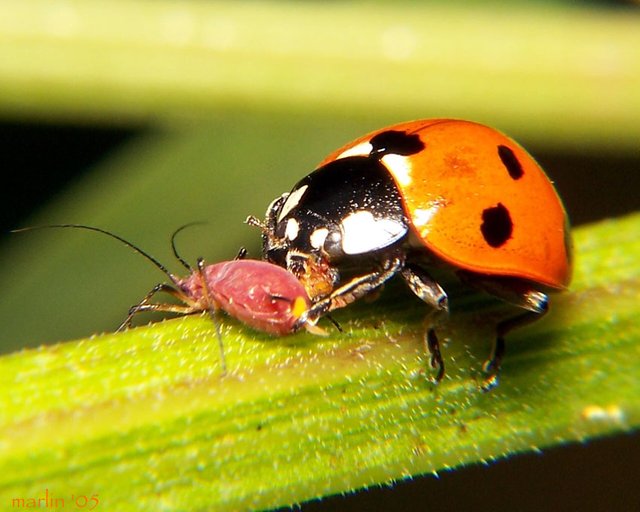

I think that practically all those who have or have had plants at home have suffered the attack of these small "suckers", capable of ending a healthy plant in a matter of weeks if the necessary measures are not taken.
And although there are many measures to alleviate or eliminate these Hemiptera, which I will also mention in a nutshell, today we will focus on one of our protagonists.
Because we have a close and voracious ally that will help us in a natural way to fight these little ones.
Creo que prácticamente todos/as aquellos/as que tenemos o hemos tenido plantas en casa hemos sufrido alguna vez el ataque de estos pequeños "chupópteros", capaces de acabar con una planta sana en cuestión de semanas si no se toman las medidas necesarias.
Y aunque hay muchas medidas para paliar o acabar con estos hemípteros, que también mencionaré de soslayo, hoy nos centraremos en una de nuestras protagonistas.
Porque tenemos una cercana y voraz aliada que nos ayudará de manera natural a combatir a estos pequeños.

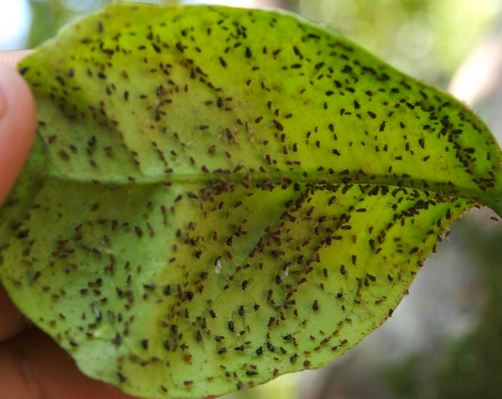

Let's start by talking a bit about the aphid in broad strokes.
These small creatures, approximately 3 millimeters in length, usually attack our plants between Spring and Summer.
They feed by biting the plant and sucking its precious sap.
Empezaremos hablando un poco sobre el pulgón a grandes rasgos.
Estos pequeños, de aproximadamente unos 3 milímetros de longitud, suelen atacar nuestras plantas entre Primavera y Verano.
Se alimentan picando a la planta y succionando su preciada savia.

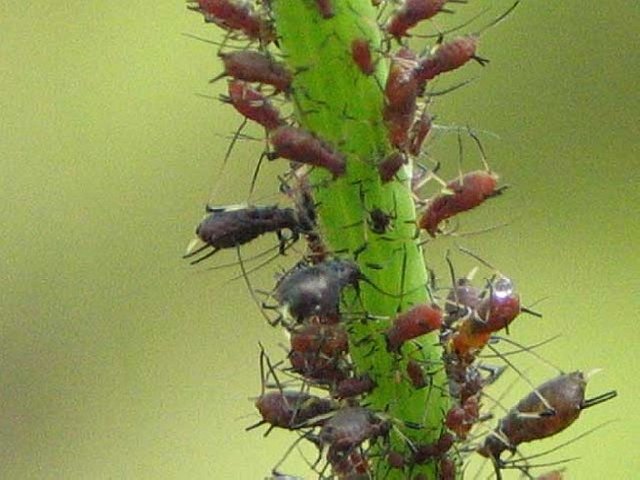

Not only do they dry the plant and prevent its photosynthesis, but also transmit a virus to every plant they bite.
In this respect, winged females are responsible for transmitting the pest to nearby plants.
Their reproduction is exponential, since the females can give birth to new females without having to be mated by males and also these newborns are created already perfectly formed (they do not lay eggs).
No sólo es que sequen la planta e impidan su fotosíntesis sino que, además, transmiten un virus a toda planta a la que piquen.
En este aspecto, las hembras aladas son las encargadas de transmitir la plaga a plantas cercanas.
Su reproducción es exponencial, ya que las hembras pueden parir nuevas hembras sin necesidad de que las copulen machos y además estos/as recién nacidos se crean ya perfectamente formados (no ponen huevos).

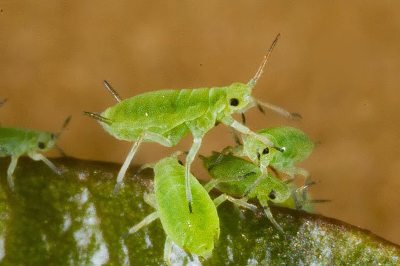

There are about 500 species of aphids, including the green aphid, like the one in the picture.
All species feel a predilection for new and more tender buds although depending on the species, some focus on one type of plant only and other aphid species have a wider range in choosing the type of plants to feed.
Hay unas 500 especies de pulgón, entre ellas el pulgón verde, como el de la imagen.
Todas las especies sienten predilección por los brotes nuevos y más tiernos aunque dependiendo de la especie, algunas se centran en un tipo de planta sólo y otras especies de pulgón tienen un abanico más amplio en cuanto a elección del tipo de plantas de las que alimentarse.

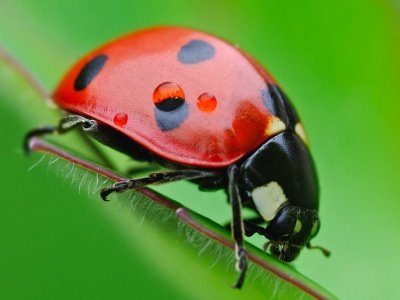

And here I present you formally to our small and colorful heroine of garden, a coleopteran of the family of Coccinellidae.
Our friends have precisely the instinct to lay their eggs near the colonies of aphids and, because they are winged, they can also follow the winged females of the aphids to any other plant, so that they may also create another anti-aphids settlement there.
Y aquí os presento formalmente a nuestra pequeña y colorida heroína de jardín, un coleóptero de la familia de los Coccinellidae.
Nuestras amigas tienen precisamente el instinto de poner sus huevos cerca de las colonias de pulgones y, al ser aladas, pueden seguir también a las hembras aladas de los pulgones hacia cualquier otra planta para también ellas crear allí otro asentamiento anti-pulgones.



One week after laying the eggs hatch the larvae of the ladybirds.
These larvae are capable of eating between 50 and 150 aphids per day.
A figure that is not negligible but if we consider that a single female of aphids can create, throughout its life, a million aphids, does not seem so much to us, right?
Una semana después de poner los huevos eclosionan las larvas de las mariquitas.
Dichas larvas son capaces de comerse entre 50 y 150 pulgones al día.
Una cifra nada desdeñable pero que si tenemos en cuenta que una sola hembra de pulgón puede crear, a lo largo de toda su vida, un millón de pulgones, no nos parece tanto, ¿no?

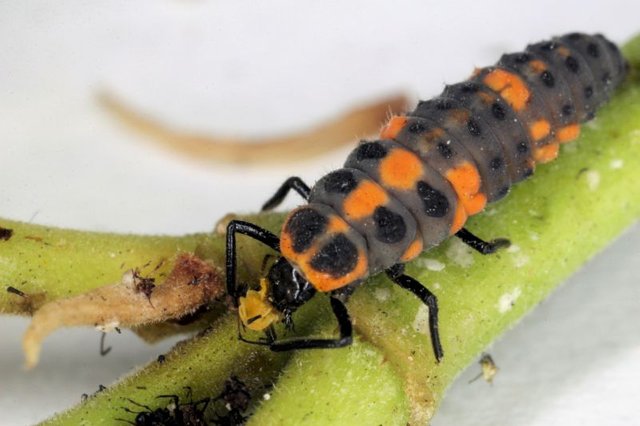

These larvae go through 4 different states before forming the chrysalis and becoming a ladybug.
The adult ladybug has a 1 year mean of life and depredates about 80 aphids a day, a figure that is not bad either.
In the absence of aphids our colorful heroines can feed temporarily on nectar of flowers and pollen, so it is in our garden's interest to have some striking flower to attract and keep them close.
Estas larvas pasan por 4 estados diferentes antes de formar la crisálida y convertirse en mariquita.
La mariquita adulta tiene una vida media de 1 año y depredan unos 80 pulgones al día, cifra que tampoco está nada mal.
En ausencia de pulgones nuestras coloridas heroínas pueden alimentarse temporalmente de néctar de flores y de polen, por lo que interesa tener en nuestro jardín alguna flor llamativa para atraerlas y tenerlas cerca.

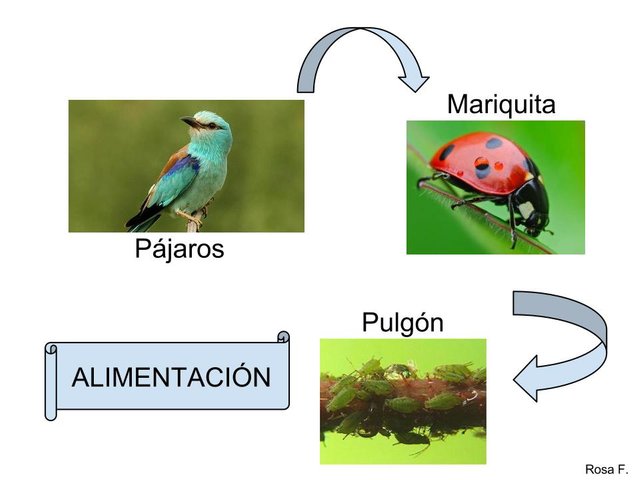

However our friends also have their own predators, such as: birds, frogs, wasps, spiders and dragonflies.
Although it seems that one of the natural defenses of our ladybug is its bad taste in the mouth of its predators.
Sin embargo nuestras amigas también tiene sus propios depredadores, como pueden ser: pájaros, ranas, avispas, arañas y libélulas.
Aunque parece ser que una de las defensas naturales de nuestra mariquita es su mal sabor en boca de sus depredadores.

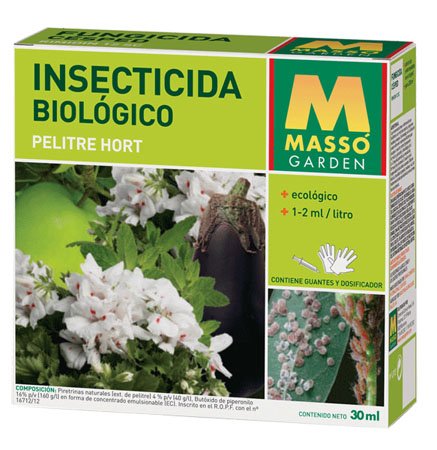

Other ways to end the aphid can be:
- Spray the affected parts with water under pressure; Remember that the sooner you act on the colony the easier it will be to finish them off.
- Potassium soap at 2% every two weeks and with a minimum of 3 applications.
- Neem oil, an ecological alternative that also fights other types of pests besides the aphid.
- Systemic insecticide with dimethoate in its composition.
Otras maneras de acabar con el pulgón pueden ser:
- Rociar las partes afectadas con agua a presión; recuerda que cuanto antes actúes sobre la colonia más fácil será acabar con ellos.
- Jabón potásico a un 2% cada dos semanas y con un mínimo de 3 aplicaciones.
- Aceite de Neem, alternativa ecológica que también combate otro tipo de plagas aparte de la del pulgón.
- Insecticida sistémico con dimetoato en su composición.

Sources/Fuentes
http://articulos.infojardin.com/PLAGAS_Y_ENF/PLAGAS/Pulgones.htm
http://www.joseeljardinero.com/eliminar-pulgon-plantas/
https://es.wikipedia.org/wiki/Coccinellidae
http://www.unhuertoenmibalcon.com/blog/2015/03/mariquitas-insecticida-natural-pulgones/
Amazing closeups! +1
Indeed! :P
Thank you very much for this nice article.
You're welcome man! I hope you've enjoyed reading it!
wow i didnt know lady bugs can be this useful!
It was an amazing discover to me also. Every creature have their purposes in life! :)
You post is very helpful for those who enjoy gardening. Unfortunately I don't have a green thumb.
Gardeners or those who have flower pots will really like it but I hope this info will usefull by itself for those who like to know some new curious nature facts :)
I once read that ladybugs become cannibals with a lack of other food...
I didn't read about this info. Have you contrasted it? It's a very interesting fact to search about.
I don't know if you watch TPB (Trailer Park Boys), I know, random... But they had an episode where pests were fought with lady bugs, it was both entertaining and informative:)
I didn't know about the existence of that TV show to wich you refer. I think itsn't broadcasted in my country.
But sure ladybugs do their gluttonous work :)
OH waw ! muy IMPRECIONANTE ; me facinan . las mariquitas lady bog . waw . esta muy educativo si . primera vez que veo su larvas y sus huevos ; ahora se si veo algo asi en mi jardinera / . Bello Bello Bello ! adoro tu post !!!.
Thank you @eaglezoo777
A pleasure!
nice post
wonderful pics
making me enjoy @dresden
Thanks man!
I really like that you've enjoyed that info.
you are welcome @dresden
dont forget follow+vote me
i will follow you back